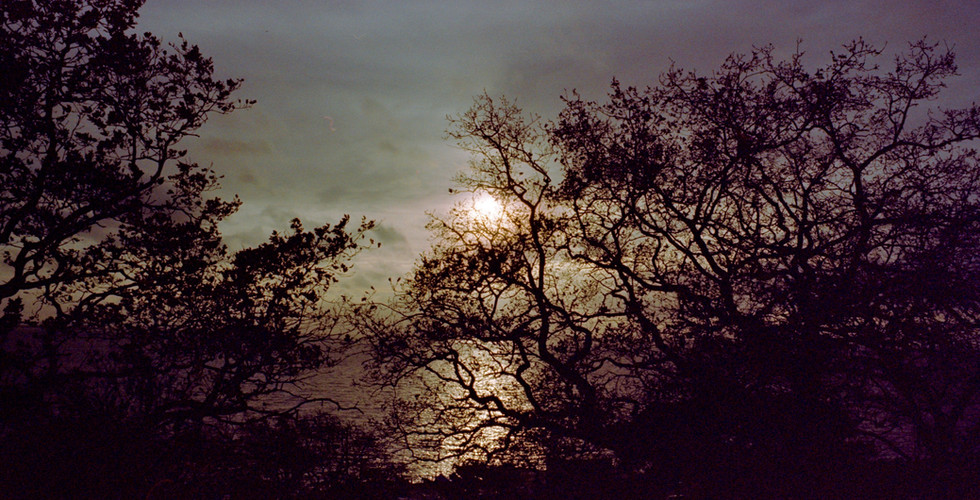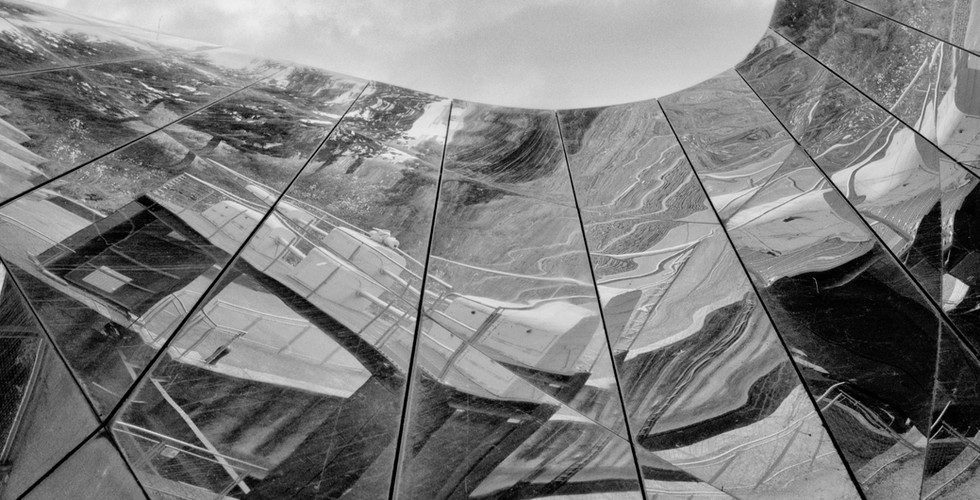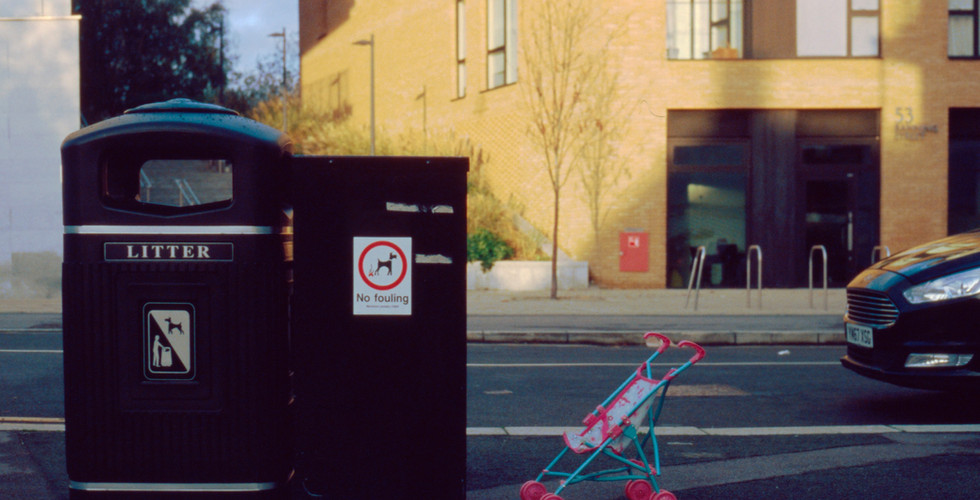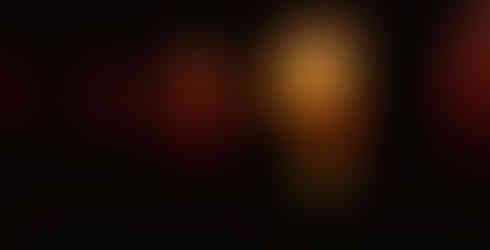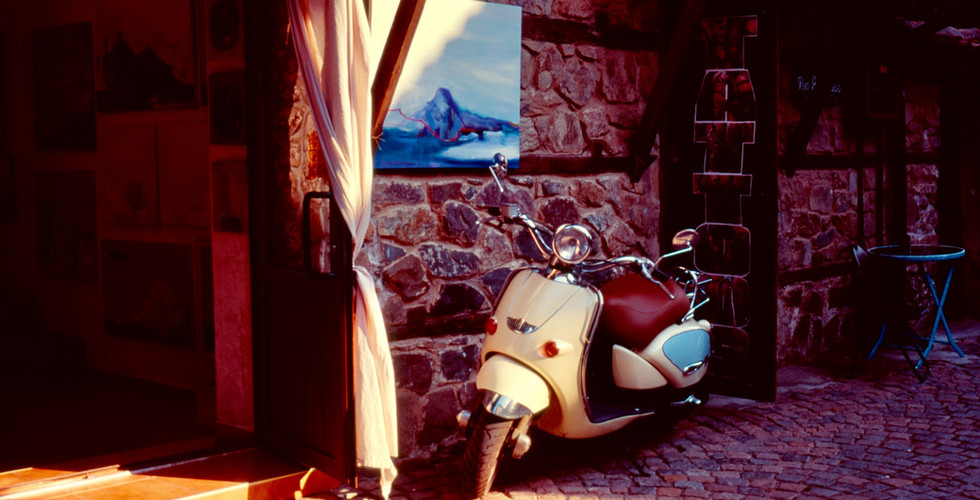The Contax G1 Review - Expensive Luxury, or Essential Kit?
- Michael Elliott
- Nov 29, 2023
- 11 min read
Updated: Mar 4, 2024
The Contax G1 is a 35mm film camera that was introduced in 1994 as the first model in the Contax G series. It is a rangefinder-style camera - and rather uniquely has an electronic autofocus system - complemented with a set of lenses designed by Carl Zeiss. It was designed to compete with the high-end rangefinder cameras from Leica and Voigtlander, but at a more affordable price. In this review, we will take a closer look at the features, its performance, and image quality, and compare it with its successor, the G2. We will also review some of the most popular lenses for the Contax G system: the Biogon 28mm f/2.8, the Planar 45mm f/2, and the Sonnar 90mm f/2.8.

More Camera Reviews:
Features and Design
The Contax G1 is a compact and sleek camera with a titanium body and a black or champagne finish (the black finish being rarer and eminently more desirable). It has a modern and minimalist look, with a few buttons and dials on the top and back of the camera. The camera has a self-timer, an exposure compensation dial, and a film speed dial. The camera also has a hot shoe for attaching an external flash or other accessories.
Viewfinder
This camera has a zooming viewfinder - i.e. one that automatically adjusts to the focal length of the lens attached - along with an electronic readout of the exposure settings. The viewfinder shows the frame lines, the focus confirmation, the exposure information, and the parallax correction. The viewfinder also has a diopter adjustment for users who wear glasses.
One of the criticisms of the viewfinder is that it is tiny - as evidenced by my ham-fisted attempts to photograph through it with my iPhone. Every time I got close to seeing through the viewfinder, the phone switched to another lens, presumably the wider angle one, to try and capture a macro shot, but the result was that the image was offset by quite a margin!




Obviously it's not that fiddly in real life, but it does pay credit to the countless complaints about its tiny size. It certainly took me a while to get used to positioning my eye just correctly in the centre of the viewfinder to see everything without vignetting.
Autofocus
The Contax G1 has an autofocus system that uses passive phase detection with an AF assist lamp. The autofocus system is fast and accurate in good light, but can struggle in low light or with low-contrast subjects, as well as with some of the longer lenses. The autofocus system can be set to single or continuous mode, or switched to manual focus mode. The manual focus mode allows the user to adjust the focus by turning the (rather unintuitive) focus dial on the top panel, while the viewfinder shows a focus confirmation indicator.

One of the main issues with using manual focus is that, unlike a rangefinder, there is not focus coincidence rangefinder patch in the middle of the viewfinder; you are reliant on an electronic readout of the distance to the subject - which relies on the autofocus system. Given there's no markings on the lens for hyperfocal focusing, I'm a little lost as to the purpose of manual focus on this camera.
As you can see in the above video, when you half depress the shutter release, the AF assist is activated which throws a high contrast pattern out to try and help provide the passive phase detection AF a patch to focus on. In my experience it helps with close up, flat/matte surfaces, but is useless for anything more than a couple meters away.
Exposure Modes
Automatic aperture-priority exposure system using a centre-weighted metering pattern. The camera can set the shutter speed from 16 seconds to 1/2000 second, depending on the light level and the aperture value. The camera can also be set to manual exposure mode, where the user can select both the shutter speed and the aperture value. The camera has a flash sync speed of 1/100 second.
Film Advance
The camera provides an automatic film advance and rewind system that uses two CR2 batteries. The camera can shoot up to 2 frames per second in continuous mode. The camera can use DX-coded film from ISO 25 to ISO 5000, or manually set film from ISO 6 to ISO 6400. The camera can also use infrared film with an IR filter.
If you’re enjoying this, please do consider subscribing to Michael Elliott’s weekly newsletter. It has lots more blog articles, photo features and more.
Performance and Image Quality
The Contax G1 is a joy to use for anyone who appreciates the rangefinder-style shooting experience. The camera is easy to hold and operate, with a comfortable grip and well-placed controls. The viewfinder is bright and clear, with all the necessary information displayed. The autofocus system (despite much maligning from some sources) is reliable and responsive, as long as there is enough light and contrast. The manual focus mode is somewhat awkward, being on the top of the camera rather than around the lens barrel, and takes some getting used to (something that the G2 attempts to correct by placing the focus ring in a more traditional Contax position), but does allow focus confirmation vs what the rangefinder reads.
The image quality of this system is superb, thanks to the excellent lenses from Carl Zeiss. The lenses are sharp, contrasty, and produce beautiful colours and bokeh. The lenses also have minimal distortion, vignetting, chromatic aberration, or flare. The lenses are well-built and have smooth aperture and focus rings.
Alternatives to the Contax G1
While the Contax G1 marries exceptional lenses to an affordable body, it's not the only choice out there. What are some of the alternatives that can offer you a quality experience?
Contax G2
Superior Successor: As we'll discuss later on, the G2 - the successor to the G1 - offers improvements in nearly every aspect.
Autofocus: Both cameras have interchangeable lenses, but the G2 features a more advanced autofocus system.
Price: The G2 is more expensive than the G1 but provides enhanced functionality.
Contax T (or T3)
Compact and Sharp: The Contax T series features a sharp 35mm f/2.8 Zeiss lens and autofocus capability.
Intuitive Menu: It’s user-friendly, making it suitable for beginners.
Fixed Lens: The T3 has a fixed lens, which may appeal to those seeking simplicity.
Legendary Brand: Leica is renowned for its high-quality rangefinders.
Manual Focus: Unlike the G1’s autofocus, the M7 relies on manual focus.
Cosina Voigtländer Bessa-R
Affordable Alternative: The Bessa-R offers rangefinder experience at a lower price point.
Interchangeable Lenses: Like the Contax G series, it supports interchangeable lenses.
Solid Build: Well-built and reliable.
Konica Hexar RF
Modern Classic: The Hexar RF combines classic rangefinder aesthetics with modern features.
Silent Shutter: Known for its quiet shutter release.
Leica M Mount: Compatible with Leica M lenses.
Lenses
The Contax G system offers seven interchangeable lenses that cover a wide range of focal lengths from 16mm to 90mm. All of them are designed by Carl Zeiss and have T* coating for optimal optical performance. In this review, we will focus on three of the most popular lenses for the Contax G system: the Biogon 28mm f/2.8, the Planar 45mm f/2, and the Sonnar 90mm f/2.8.
Biogon 28mm f/2.8
The Biogon 28mm f/2.8 is a wide-angle lens that offers a classic perspective for landscape, street, or documentary photography. It is one of the original lenses released with the Contax G1, along with the Planar 45mm f/2 and the Sonnar 90mm f/2.8. The lens has 6 elements in 4 groups and a 7-blade aperture diaphragm. The lens has a minimum focus distance of 0.5 meters and a maximum magnification of 0.15x, and weighs 160 grams.
The Biogon 28mm f/2.8 is a sharp and contrasty lens that delivers excellent image quality across the frame. The lens has minimal distortion, vignetting, or chromatic aberration, even at wide apertures. The lens also produces natural and vivid colours and smooth bokeh. The lens is well-suited for capturing expansive scenes with fine details and rich textures.
Planar 45mm f/2
The Planar 45mm f/2 is a standard lens that offers a natural and versatile perspective for portrait, travel, or everyday photography. It is widely regarded as one of the best lenses ever made for 35mm photography, and is often compared to the legendary Leica Summicron-M 50mm f/2. The lens has 6 elements in 4 groups and a 6-blade aperture diaphragm. The lens has a minimum focus distance of 0.5 meters and a maximum magnification of 0.15x. The lens weighs 140 grams.
The Planar 45mm f/2 is a superb lens that delivers outstanding image quality at any aperture. The lens is sharp from corner to corner, with high contrast and resolution. The lens also produces beautiful colours and bokeh, with smooth transitions and pleasing out-of-focus areas. The lens is ideal for capturing portraits with natural skin tones and expressive eyes, or any subject with fine details and subtle nuances.
Sonnar 90mm f/2.8
The Sonnar 90mm f/2.8 is a telephoto lens that offers a compressed and flattering perspective for portrait, fashion, or wildlife photography. As previously noted, it is one of the original lenses released with the system, along with the Biogon 28mm f/2.8 and the Planar 45mm f/2. The lens has 5 elements in 4 groups and a 6-blade aperture diaphragm. The lens has a minimum focus distance of 1 meter and a maximum magnification of 0.14x. The lens weighs 200 grams and has a filter size of 46mm.
The Sonnar 90mm f/2.8 is a sharp and smooth lens that delivers excellent image quality at any aperture, but stopped down to f/5.6 really sings. The lens has low distortion, vignetting, or chromatic aberration, even at wide apertures. The lens also produces natural and warm colours and bokeh, with soft backgrounds and creamy highlights. The lens is perfect for capturing portraits with flattering facial features and elegant poses, or any subject with depth and dimension.
Silver Label vs Green Label
One of the things that you may notice when looking for a Contax G1 camera is that there are two versions: silver label and green label. The silver label version is the original version that was released in 1994, while the green label version is a modified version that was released in 1996. The main difference between them is that the green label version has an updated firmware that allows it to use two new lenses: the Biogon 21mm f/2.8 and the Planar 35mm f/2. The silver label version cannot use these lenses unless it is modified by a technician.
The green label version is generally more desirable and expensive than the silver label version, as it offers more compatibility and flexibility with lenses.

Contax G1 vs G2: Which Should You Buy?
The Contax G1 was followed by the Contax G2 in 1996, which was an improved version of the G1 with some new features and enhancements. The Contax G2 had a faster autofocus system, a larger viewfinder, an improved button layout, an exposure bracketing function, a continuous shooting mode up to 4 frames per second, and an optional data back. The Contax G2 was also compatible with a new lens: the Vario-Sonnar 35-70mm f/3.5-5.6.
What's the difference between the Contax G1 and the Contax G2?
The comparison between the two systems is not an easy one, as both cameras have their pros and cons. The Contax G2 is undoubtedly the superior camera in terms of features, performance, and versatility, but it also comes at a higher price (around £1200-£2000 for the body only) and an ever so slightly larger footprint (133 x 77 x 38 mm vs 133 x 76 x 35 mm). The G1 is still a great camera in terms of design, and ease of use, and with access to most of the same lenses, but it also has some limitations, such as the slower autofocus system, the smaller viewfinder, the less ergonomic button layout, the lower continuous shooting speed (2 frames per second) and the absence of data back option. The G1 is also incompatible with the only zoom lens for the system: the Vario-Sonnar 35-70mm f/3.5-5.6.
The choice between the G1 and the G2 depends on your personal preferences, budget, and shooting style. If you want a simple and elegant camera that produces stunning images with minimal fuss, then the G1 may be the right choice for you. If you want a more advanced and versatile camera that offers more features and options, then the G2 may be the better choice for you. Either way, you can’t go wrong with a Contax G camera, as they are both excellent examples of 35mm rangefinder cameras with autofocus.
Sample Photos
Here are some sample photos taken with the Contax G1 camera and various lenses:
Biogon 28mm f/2.8:
Planar 45mm F/2
Sonnar 90mm f/2.8
As you can see from these photos, the G1 camera and lenses produce amazing images with sharpness, contrast, colour, and bokeh. The photos also show how versatile and flexible the Contax G system is, as it can handle various subjects and situations with ease.
Conclusion
The Contax G1 is a classic 35mm rangefinder camera with autofocus that offers superb image quality, sleek design, and ease of use. The camera (in its later, green label guise) is compatible with six interchangeable lenses from Carl Zeiss that cover a wide range of focal lengths and deliver outstanding optical performance. The camera has a few flaws, such as the slow autofocus system, the small viewfinder, and the limited compatibility with some lenses, but these are minor drawbacks compared to the overall value of the camera. It can be found secondhand on eBay for around £600 for the body only, or around £950 for a kit with one or two lenses. This makes it a very affordable option for anyone who wants to experience the rangefinder-style shooting with autofocus and high-quality lenses.
The Contax G2 is an improved version of the G1 that has some new features and enhancements, such as the faster autofocus system, the larger viewfinder, the exposure bracketing function, the continuous shooting mode and the data back option. The Contax G2 is also compatible with a new lenses: the Vario-Sonnar 35-70mm f/3.5-5.6. The Contax G2 is undoubtedly the superior camera in terms of features, performance, and versatility, but it also comes at a higher price (around £1200-£2000 for the body only) and a larger size. The G2 may be worth the extra money for some users who want to have more options and capabilities, but for others, the G1 may be enough to satisfy their needs and preferences.
The choice between the G1 and G2 depends on your personal preferences, budget, and shooting style. If you want a simple and elegant camera that produces stunning images with minimal fuss, then the G1 may be the right choice for you. If you want a more advanced and versatile camera that offers more features and options, then go for its younger brother, the G2, which may be the better choice for you. Either way, you can’t go wrong with a Contax G camera, as they are both excellent examples of 35mm rangefinder cameras with autofocus.
Technical Details
Body:
Lens release: via a button on front of the camera
Focusing:
Auto: open-loop (non-TTL) autofocus system, single or continuous, w/ AF illuminator
Manual: via a calibrated manual focus wheel on the top plate, w/ two scales for different lenses
Shutter: Electronically controlled vertical travel focal plane shutter
Speeds: 16-1/2000 in auto and 1-1/2000 in manual
Manual shutter speeds are on the same dial as the Auto position, w/exposure compensation
Exposure meter: TTL Aperture Priority Autoexposure center weighted average metering, or manual
AE Lock: With main switch or half release
ABC Lever: The built-in Automatic Bracketing Control
Viewfinder: Real image viewfinder, coupled with mounted lenses(zoom rangefinder).
Display Panel: Photographic data in large LCD panel in the viewfinder.
Film loading: Auto loading and advance to first frame , reads DX speeds, ISO 25-5000
Film Speed/Down Button: The DX contacts can be manually overridden here in order to set a particular ISO 6-6400
Winding: Auto with built-in motor
Drive Mode Selector: single exposure, continuous shooting, self-timer, or multiple exposure
Frame Counter: Auto-resetting, additive type
Re-winding: Auto rewind with mid-roll rewind possible
Diopter adjuster: built-in on viewfinder eyepiece
Flash sync: max. 1/100
Self timer
Hot-shoe
Strap lugs
Body: Titanium, top, bottom, front, and back covers; Weight: 518g
Back Cover: opened by back cover release knob, detachable
Battery: Two 3V lithium batteries (CR2), Auto Battery Check
Engravings on the bottom plate: Kyocera, Japan and serial no.
Lenses
Standard lens is Carl Zeiss Planar T* 45mm f/2, AF.
Contax G system mount, 6 elements in 4 groups,
Filter thread: 46mm.
Focus: 0.5m to inf., red T* means multicoated
Aperture:f/2-f/16;
Diaphragm: Manual and uncoupled, 6 straight blades
Weight: 182g
All photography in this article is copyright © 2023 Michael Elliott. All rights reserved.
You can follow Michael Elliott on:
MichaelElliottPhotographer on Facebook
MichaelEllio77 on Twitter
michaelelliottphotography on Mastodon
michaelelliottphotography on 500px
michaelelliottphotography on Flickr
mephotographer on Behance
If you enjoyed this, please do consider subscribing to my weekly newsletter. It has lots more blog articles, photo features and more.



